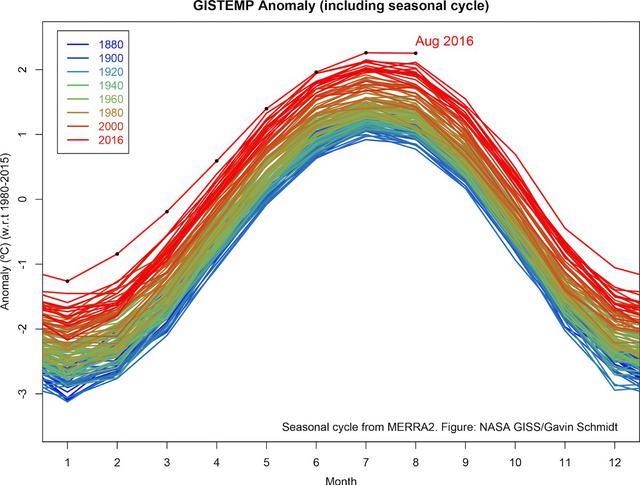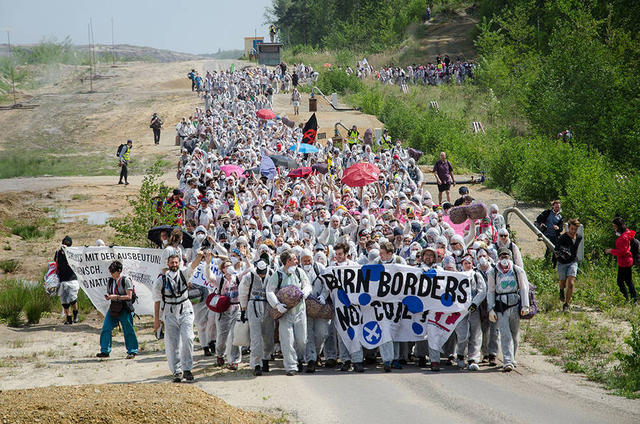

Divestment Global week of action
Wanneer: 05/05/2017 - 16:30 t/m 13/05/2017 - 16:30
The Goal: Utilize a global divestment period to solidify the association between climate impacts as the moral urgency to divest from fossil fuels and to build momentum of divestment in new regions.



The Story: 2016 was the hottest year in history, with each consecutive month marking the hottest on record. From record heat and extreme floods and droughts to stronger and more frequent storms, climate impacts continue to devastate the livelihoods of communities all around the world, disproportionately threatening those who have done the least to contribute to the crisis. And all of this is happening at a pace and magnitude far beyond previous expectations of scientists.
We know who is responsible: the fossil fuel industry knowingly perpetuating the climate crisis. Fossil fuel companies have spent the last half a century funding climate denial front groups and orchestrating a campaign to sow deception and block climate action.
It is investments in the fossil fuel industry that funds climate impacts. That’s why our governments, universities, religious organizations, cultural institutions, individuals, and more, must divest and cut ties with this rogue industry in order to curb the worst of future impacts of climate change. We must use every tool in our arsenal to act on the climate crisis.
The world is moving away from fossil fuels. Since its inception in 2012, the fossil fuel divestment has played a significant role in the movement for climate justice that is successfully shifting the zeitgeist away from the fossil fuel economy.
All around the world, the fossil fuel resistance movement is growing -- people are mobilizing against fossil fuel infrastructure, and putting their bodies on the line in the call for a just transition toward a 100% renewable energy economy that works for all.
Fossil fuel divestment has become a global, mainstream $5 trillion movement because our institutions and society know that we need a rapid and equitable shift of economic and political control away from extractive corporations. Through divestment, institutions have a unique opportunity to address inequity and reinvest in an economy that prioritizes people and planet.
Climate impacts are taking us into uncharted territory and climate action by governments is not happening quickly enough to ensure we avoid the worst impacts of the climate crisis. Divestment is a concrete way to expedite the response and actively build the world we need where people and planet are safeguarded.
Divestment is a tactic, climate justice is the goal.

New Economy
The ‘New Economy’ unveiled by the global financial elite at COP21 has two main components: 1. ‘clean energy’, and 2. ‘sustainable capitalism’. These, in turn, comprise two of the elements of the United Nations (UN) Sustainable Development Goals (SDGs) for the 21st Century–a partnership project between Wall Street, the UN and international NGOs, i.e. Avaaz, Ceres, Purpose and 350.
The primary promoters of the ‘New Economy’, ‘clean energy’ and ‘sustainable capitalism’–that form the core of the UN SDGs–are Bill Gates, Jeremy Heimans (Avaaz & Purpose) and Bill McKibben (350). Economic development under the SDGs relies on financial investment from the World Bank, and compliance enforcement from the International Monetary Fund (IMF)–in partnership with Wall Street and regional investment banks.
The results of this ‘sustainable capitalism’ can already be seen in the form of mega-dams, mega-plantations, and mega-mining projects in South America, Africa and Asia. This industrial development–while profitable to the investors–has unfortunately resulted in major deforestation, toxic pollution of fresh water, and ethnic cleansing of Indigenous peoples who formerly called these territories home.
Adjacent to the mega-dams, mega-plantations, and mega-mines of the ‘New Economy’ are makeshift camps for the industrial laborers, as well as rural shanty towns for displaced farmers and fishermen. The Indigenous peoples–those that aren’t murdered by corporate security personnel working in tandem with the police and military–are frequently relocated to urban slums far away, where many die a slow death of poverty and substance abuse.
The mega-dams provide electricity for industry, including the processing of minerals from the mega-mines, as well as the GMO soy and palm oil produced on the mega-plantations. The ‘clean energy’ minerals include gold, copper, and lithium, which are used in consumer electronics, solar panels, wind mills, and batteries for electric vehicles. They also include coal, oil, and uranium that is used to fuel the electrical grids in countries such as France, Japan and the UK.
The ‘clean energy’ plan of the UN, Wall Street and NGOs–that championed the financial elite at COP21–relies on two primary projects: 1. a global nuclear power renaissance, and 2. privatization of Indigenous and public resources worldwide.
Enchanting as the chimera of clean energy might be, it doesn’t scale to meet energy demand, and its use by marketing agencies like Avaaz, Purpose and 350 is to perpetuate the misbelief that Wall Street — which caused all our social and environmental problems — is our only hope for salvation. Sort of a New Age Ghost Dance.
http://www.wrongkindofgreen.org/tag/bill-mckibben